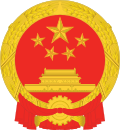Duties
The bureau is responsible for coordinating the defense of 22,000 kilometers of land borders, 18,000 kilometers of mainland coastline, and 14,000 kilometers of island coastline. [6]
Since 1996, China has been building an extensive system of facilities and monitoring systems to cover the entirety of this massive border. Since 2017, the military border is patrolled by the PLA (replacing the PAP), and the National Immigration Administration and General Administration of Customs are responsible for civilian border crossings. The BDB has coordinating duties for the military border defense units, and the civilian border protection entities (such a drug interdiction by the Public Security Bureaus, undocumented migration control by the China Immigration Inspection, even the foreign ministry border office). [7]
The BDB is responsible for coordinating the construction, maintenance, and use of hundreds of border crossings, 30,000 km of border roads, 25,000 km of maritime border patrol tunnels, 7,000 km of fences, 3,000 border markers, watchtowers, and coastal installations; and it is responsible for the "digital border surveillance system" (边防数字监控系统), finished in 2009, that links thousands of surveillance sentry posts to 10 large-scale monitoring centers with over 10,000km of fiber optic cables. [8] The BDB is also responsible for coordinating with local authorities to carry out the "five-in-one" border defense policy (meaning the army, the police, the state, the party, and the people coordinating for border defense), [6] and implementing "3D border protection and control systems" (边境立体化防控体系) using new information technology to monitor the borders. [7]
This page is based on this
Wikipedia article Text is available under the
CC BY-SA 4.0 license; additional terms may apply.
Images, videos and audio are available under their respective licenses.

